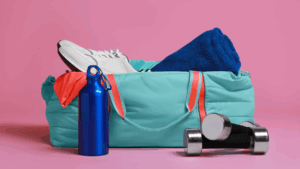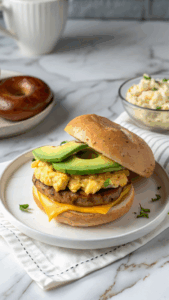
Taking the leap to a gluten-free lifestyle can feel like being dropped in a foreign country without a map. The grocery store, once a familiar place, suddenly becomes a maze of confusing labels and hidden ingredients. You find yourself asking, “What can I even eat?”
If you’re standing in the aisle feeling overwhelmed, take a deep breath. You are not alone. Whether you’re going gluten-free for Celiac disease, a sensitivity, an autoimmune condition like Hashimoto’s, or simply to feel better, this journey is completely manageable.
This guide is your new best friend. We’ll walk you through the grocery store, aisle by aisle, so you can shop with confidence, reclaim your health, and maybe even discover some delicious new foods along the way.
Before we shop, let’s get clear on the target. Gluten is a protein found in wheat, barley, and rye.
Going gluten-free means avoiding these three grains and any products containing them.
The secret to successful gluten-free shopping is to shop the perimeter of the store first. This is where you’ll find the majority of naturally gluten-free, whole foods.
This is your happy place! Every single fresh fruit and vegetable is naturally 100% gluten-free. Load up your cart here.
Like produce, this section is overwhelmingly safe. Fresh, unprocessed proteins are your friend.
⚠️ Watch Out For:
Most dairy products are naturally gluten-free, but you still need to be a savvy shopper.
⚠️ Watch Out For:
This is where label-reading becomes your superpower.
This aisle is your dedicated gluten-free section. It’s a great place to find direct swaps for your old favorites.
This is the most critical skill you will learn.
To set yourself up for success, grab these essentials on your first few trips:
Going gluten-free is a learning process, not a test of perfection. You will make mistakes, and that’s okay. Be patient and kind to yourself.

Tired of your old gym bag? Discover the best cute, stylish, and functional gym bags for women. From chic totes to versatile backpacks with shoe compartments, find the perfect bag to take you from workout to weekend in style.

Feeling bloated or hormonally imbalanced? Your gut may hold the key. Discover the best fermented foods for women’s health, how they improve digestion, mood, and hormonal balance, and how to easily add them to your diet.

Want to build strong, sculpted legs quickly? Discover the most effective compound exercises for women that target multiple leg muscles simultaneously for faster growth and a powerful lower body. Say hello to leg day gains!

Upgrade your morning with the ultimate high-protein breakfast bagel! This recipe stacks a toasted bagel with a cheesy cottage cheese egg scramble, savory sausage, and creamy avocado for over 40g of protein.

Feeling stressed and your budget is tight? Discover practical and affordable self-care ideas designed for women. Learn how to nourish your mind, body, and soul without spending a dime (or very little!).

Ditch boring breakfasts! Make this high-protein Cheesy Spinach & Egg White Quesadilla in under 10 minutes. A healthy, delicious, and easy way to fuel your busy morning.
© Custom Curves the Fitness Blog 2024